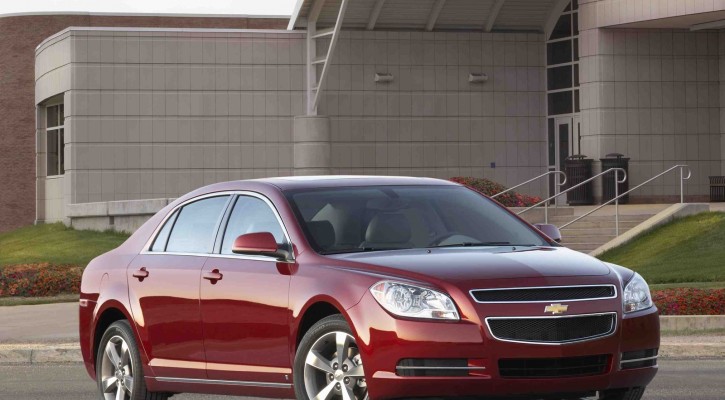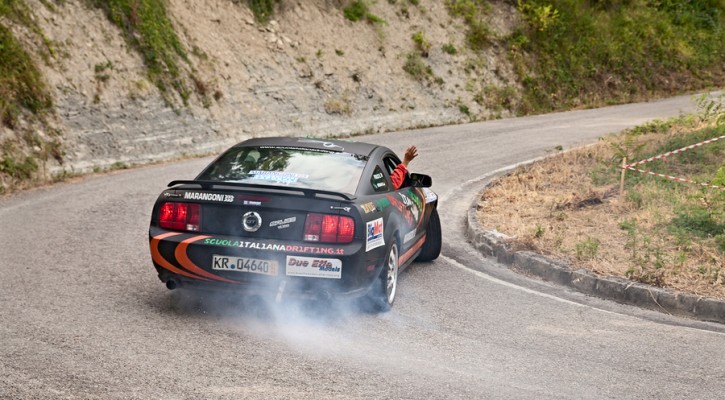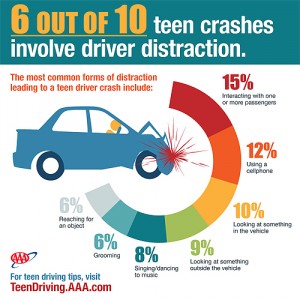Tag Archive: driving safety

Binge Drinking By Teens Affects Their Adult Behavior
April 3, 2015
Binge drinking by teens can lead to genetic changes that will affect their adult behavior according to a study by researchers at the University of Illinois at Chicago College of Medicine and published online in the journal Neurobiology of Disease.
The researchers used rats as a model for teens. They gave adolescent rats, at 28 days of age, alcohol for two days on and two days off for 13 days. Later, as the rats matured, they were able to observe the adult rats for behavior changes and their preference for alcohol. Compared to rats that weren’t given alcohol as adolescents, the “binge drinking” rats showed more anxiety-like behaviors as they entered adulthood and, when given a choice between water or alcohol, showed a preference for the alcohol.
While most of our genetic makeup is present at birth, some genes can be changed through exposure to chemicals in the environment that are absorbed through the lungs or consumed in food or liquids. These chemical and environmental changes to our genetic makeup are known as epigenetics.
In the study, the brains of rats that were given alcohol as adolescents showed changes in the area of the brain known as the amygdala. They found increased levels of a protein (HDAC2) that causes the DNA to be tightly wrapped. The tightly wound DNA, together with the increased level of the protein limits the ability of nerve cells to form new synaptic connections.
The researchers felt that the tightly wound DNA strands prevented the formation of new connections needed in the rapidly developing adolescent brain. That the inhibited growth leads to more anxious behaviors and the tendency toward alcoholism in adults.
The one bit of good news was the discovery that a cancer drug known to block expression of the HDAC2 protein was able to reverse the effects of the tightly wound DNA strands in adult rats. However, it will take years of research to find out if the drug will also work on adult humans and whether or not the drug will have to be given long-term to reverse the effects of the alcohol consumed during adolescence.
The best cure is prevention.
Read more: Adolescent drinking affects adult behavior through long-lasting changes in genes
Driver Distractions Contribute To 60 Percent Of Teen Crashes
March 26, 2015
Driver distractions are a factor in almost 60 percent of teen crashes according to a new report by the AAA Foundation for Traffic Safety. To gather the data for this study, researchers viewed dash cam footage from teen drivers age 16 to 19 who participated in the study. From this data, the researchers were able to view the actions of the teen drivers in the final seconds leading up to a total of 1,691 teen crashes that occurred between August 2007 and July 2013.
The data showed that driver distractions were a factor in 58 percent of the teen crashes. The AAA infographic below shows the most common types of distracting behavior leading to a crash. (Click on graphic to enlarge)
Cell phones and other teens aren’t the only types of driver distractions. A recent study from Oregon State University found that twenty-seven percent of teens admitted to changing clothes and shoes while driving. They also reported changing contact lenses, putting on makeup, and doing homework behind the wheel.
As expected, use of cell phones was a major factor in the AAA study and the researchers feel that the involvement of cell phones occurs more often than government statistics show. In the crashes where cell phone use was a factor:
- Drivers operating or looking at cell phones looked away from the forward roadway excessively – spent an average of 4.1 seconds out of final 6 seconds before the crash looking away.
- The driver exhibited no reaction at all before impact in over half of rear-end crashes involving cell phone use.
In a previous article, we reported that speed and driver distractions were the most common cause of teen crashes. According to the AAA study, excessive speed was a factor in 79 percent of the single vehicle crashes. When excessive speed and driver distraction are combined, the results can be deadly.
Read more: Fact Sheet – Environmental Factors and Driver Behaviors in Teen Driver Crashes

Consumer Reports Lists Safest Used Cars For Teens
March 12, 2015
Consumer Reports has come out with a list of what they believe are the safest cars under $10,000 for teens. This list, combined with a similar list by the Insurance Institute for Highway Safety (IIHS) published last summer, can be a valuable guide for parents who are in the market for a used car for their teen driver.
Both the IIHS list and the Consumer Reports list are similar in that they rely on crash data and on safety equipment, either standard or optional, included in each vehicle model. In both lists, the standard safety equipment includes:
- Electronic Stability Control (ESC) – ESC helps the vehicle remain on the road and prevents rollovers in emergency situations. According to Consumer Reports, ESC is, statistically, the biggest safety improvement since seat belts. ESC became mandatory on all vehicles built after 2012 but many manufacturers started offering it as standard equipment in prior model years. According to Consumer Reports, vehicles equipped with ESC “will also have anti-lock brakes and probably traction control, since they require all the same hardware components.”
- Side Impact Air Curtains – Front airbags are mandatory on all vehicles but side impact air curtains are important to protect the vehicle occupants in side crashes.
While not specifically listed as a safety device, those vehicles with adjustable steering wheels and foot pedals allow shorter drivers to adjust the seat a safe distance from the front airbag while still being able to comfortably reach the foot pedals and see over the steering wheel.
Another feature that buyers should look for are adjustable shoulder harnesses. Adjustable shoulder harnesses allow drivers of any height to comfortably place the shoulder harness in the proper position across the shoulder bone and centered over the breastbone. Many drivers, especially shorter ones who find that the shoulder harness rubs against their neck, may try to place the shoulder harness behind them – an extremely dangerous practice.
As in the IIHS list, the Consumer Reports list includes vehicle options that buyers should steer away from if the car is being purchased for a teen driver. Those options include:
- MyFord Touch – ”a distracting infotainment system.”
- Toyota RAV4 – Optional third seat – too many teens in a vehicle are distracting and play a large part in teen crashes.
The Consumer Reports list points out Bluetooth and hands free phone systems included in some models but buyers should be aware that some state laws prohibit the use of any type of wireless communications by teens while driving, whether it’s hands-free or not.
For more information visit: Safest used cars under $10,000 for teen drivers
Photo courtesy of: cargurus.com

Planning For A Fun And Safe Spring Break
March 3, 2015
It’s that time of year again and the warm beaches of Florida are going to be prime destinations for spring breakers. Spring break is a lot of fun and can provide a lifetime of memories but it can also, just as easily, turn tragic. If you’re headed to the coast, remember the lessons learned in your drug and alcohol course as well as our top safety tips for a safe spring break.
- Maintain a buddy system – Travel with friends and stay with those friends to keep each other out of trouble. Along with college students, spring break also attracts unsavory types such as thieves and sexual predators. Don’t go off alone with someone you don’t know.
There are a lot of reasons not to drink but, if you feel you must:
- Have a plan – Plan on how you’ll get home safely, either by cab or a designated driver. Plan to limit your drinking. If you make a plan before you go out, chances are, you’ll stick with that plan but if you wait until after you’ve been drinking to decide what to do, your judgment will be clouded and you could drink yourself into trouble.
- Limit your drinking – While the effect of alcohol is different on everyone, a general rule of thumb is that it requires at least one hour for the body to process the alcohol from one drink. The more you drink, the longer it takes for the body to process the alcohol and get it out of your system. For females, who are generally smaller, one drink can affect you much more quickly than it will for a male and can take longer for the body to process.
- Binge drinking is deadly – Your body can only process so much alcohol before it becomes toxic. Alcohol affects your motor skills. You quickly start to feel the effect on the voluntary motor skills that control your speech, vision and ability to walk but too much alcohol can shut down the involuntary muscles controlling the heart and lungs and death from alcohol poisoning is the result. Drinking games look like fun but, for your own safety, make a plan before you go out not engage in any games that could lead to alcohol poisoning.
- Know what you’re drinking – Different drinks have different amounts of alcohol. Some sweet, flavorful cocktails can have up to four shots of liquor. Depending on your body size, a single cocktail can immediately put you over the legal limit.
- Females; guard your drinks – A female who leaves her drink unattended can easily become the victim of a sexual predator who has slipped Rohypnol (the date rape drug) into her drink. If you leave your drink unguarded at any time, dump it and get a fresh drink.
- Alcohol and the sun don’t mix – If you only drink alcoholic drinks when you’re out in the sun, you can easily become dehydrated. The combination of the sun and activities can quickly wear you out and alcohol will compound that effect. Switch off with water or fruit drinks.
- If it seems like a crazy stunt, it’s probably too dangerous – After drinking, spring breakers have died trying to show off by balancing on bannisters, doing pull ups off of hotel balconies, or trying to dive from a balcony into the hotel pool. Unfortunately, instead of stopping them, their friends, also under the influence of alcohol, urged them on. If you see someone trying to pull a dangerous stunt, try to stop them or call local security. You could save their life.
- Scooters and mopeds – If you rent a scooter or moped, make sure you’re familiar with its operation and watch out for other drivers on the road who may not be watching out for you. Never try to operate a scooter or moped if you’ve been drinking.
- Don’t party to the end – Don’t try to party up to the last second before leaving for home. If you’re driving, everyone in your party should try to get a good night’s sleep before heading home. Driving drowsy is just as dangerous as drunk driving.
- Stay alert driving on the road – Share driving duties and switch off with other drivers to remain alert. Long periods on a boring interstate can lead to “highway hypnosis”; avoid that by stopping every two hours or 100 miles to refresh yourself or take a short nap. If you have a long way to drive, don’t try to do it in a single trip. Stop and get some rest before continuing.
- DON’T DRIVE DRUNK OR DRUGGED!!!! – It should go without saying but there are far too many tragedies on spring break because people ignored this simple piece of advice!

“ Swangin ” Stupid And Deadly
November 25, 2014
A new word was introduced into our vocabulary; “ swangin.” The term, first introduced by the hip hop artist Stalley on a 2013 album, means swerving from lane to lane as you drive down the road. While it may make for a good song, in practice, it’s dangerous, deadly and not at all smart.
Two days ago, an 18 year old driver who was swangin on a roadway in a business district of Houston,Texas lost control of his car, slammed into a fence and rolled over. His 15 year old female passenger, who wasn’t wearing a seat belt, was ejected from the vehicle and killed.
The problem with swangin is that, as the car swerves back and forth, the tires have less contact with the road. If the speed is high, there’s even less tire contact. Once the tires lose contact with the road, there’s no way to control the car.
No matter how good a driver you may think you are, if you’re swangin, there’s no way you can overcome the physics involved in keeping the car on the road. When you put these kinds of stresses on a car, you’re asking for trouble.
This isn’t the first time someone was killed as a result of swangin. Another Houston area teen lost his life as the result of a swangin crash in October.
Read more: ‘Swangin’ crash kills 15-year-old female passenger; driver charged

